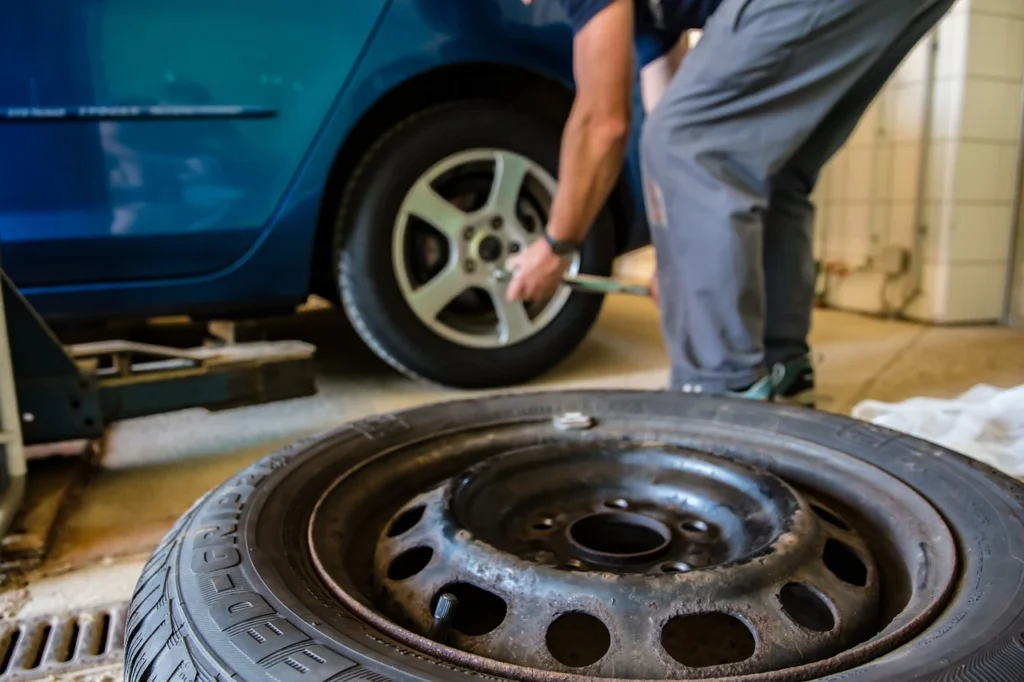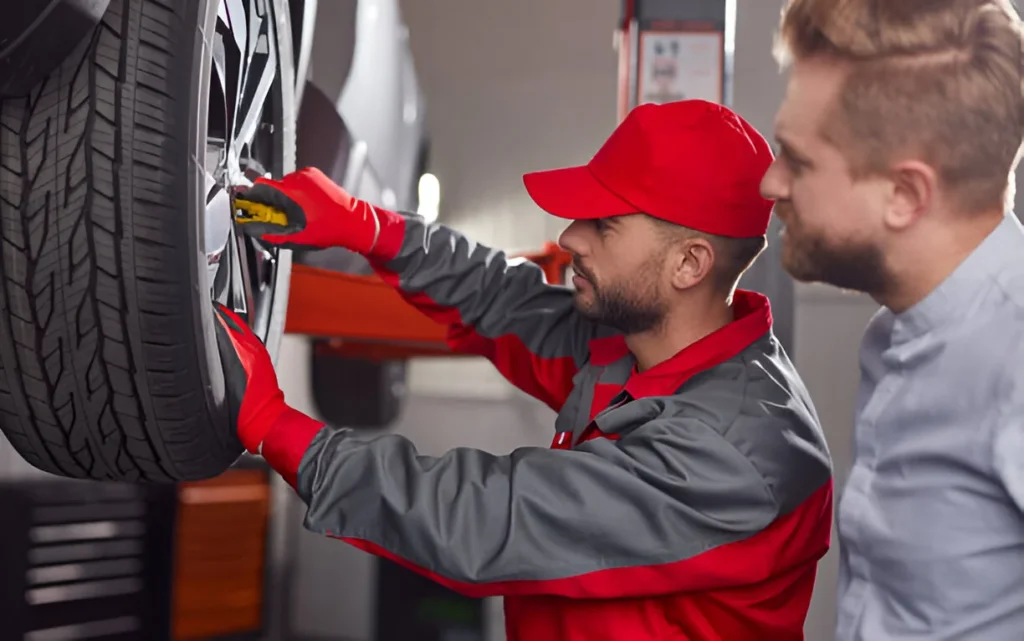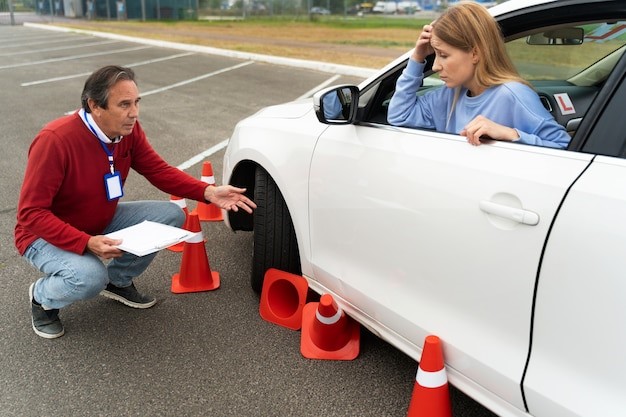Your tires are your car’s part that contacts the road — yet they are perhaps the most ignored. There are so many drivers wondering: How often should you replace your tires? It depends on several factors – how many miles you have, your age, how you drive, and what the visual signs are. This ultimate guide will highlight how to check the condition of your tires, what the average life of a tire is, and how to notice tire wear signs before safety becomes an issue.
How Long Do Tires Last?

Tires typically last between 25,000 and 50,000 miles, depending on the tire type and use. High-performance tires, typically sports cars, can wear out at an even faster pace — 20,000 miles. However, seasonal tires usually fall more on the higher side. Mileage is only part of the factor. Signs of aging in tires, such as cracks in the rubber or sidewall bulges, can signal that it may be the right time to replace your tires.
Manufacturer Guidelines
Most manufacturers recommend changing tires every 6 years with a maximum life of 10 years. Rubber gets old in the same way that an old rubber band slowly snaps when you pull it.
Pro Tip
Check the D O T code printed on your tire’s sidewall to discover the week and year it was manufactured. For example, “3519” means the tire was made in the 35th week of 2019.
Signs You Need New Tires

Understanding how to tell if you need new tires is important for road safety. Here are some warning signs:
1. Tread Depth Is Too Low
Tread gives grip and takes water away from the contact patch. When tread becomes too thin, your stopping distance increases dramatically, particularly on wet roads.
One common rule is the “penny test”: Insert a penny head-down into your tire tread. If you see all of Lincoln’s head, your tread is below 2/32”, and the time to replace the tire.
Tip: Consult a tire tread depth chart to compare the measurements and legal safety standards.
2. Visible Tire Wear Indicators
Modern tires include a set of built-in wear bars that become flush with the tread surface as they wear. If these bars are level with the tire, you’ve reached the minimum legal tread depth.
3. Cracks, Bulges, or Uneven Wear
- Cracks = aging rubber
- Bulges = internal damage or sidewall failure
- Uneven wear = alignment or inflation issues
Any of these symptoms should prompt immediate replacement.
4. Vibration While Driving
If your steering wheel is shaking or vibrating, especially at highway speeds, it’s usually a sign that you have either worn tires, out-of-balance wheels, or suspension problems. Start with a tire check.
How to Identify Unsafe Tires: Wear, Age, Damage & Tests
Tires are some of the most critical to your vehicle as they will ensure safe driving as well as enable your vehicle to handle itself well. Tires may wear out, be damaged, or get old to the extent that they cannot be used. Before driving, it is also important to routinely perform tire checks to prevent unsafe driving status. Here are the ways you can Inspect dangerous tires based on wear, age, and damage as well as through some simple tests.
1. Tire Wear:
Another obvious indication that something is wrong with your tires is excessive or irregular wear of tires. This is what to look out:
- Tread Wear: Tires are formed in ways that give them tread, which surfaces that are used to give traction. When the tires are down to 2/32 of an inch and less, it begins to lose its road grip especially in wet weather. This significantly poses a danger and means that the tire has to be changed.
- Uneven Wear: Uneven tread wear would indicate a problem with a tire, alignment or possible suspension. The imbalance may result into a rough ride and risk of tread separation.
2. Tire Age:
It does not matter whether your tires appear wise or not, they can be unsafe because of the age. Tires tend to wear out even when they are not in use on a regular basis.
- Tire Expiry: Depending of the model and the weather conditions manufacturers suggest to replace tires every six to ten years. In order to find out the age of the tire, you can refer to the DOT codes on the sidewall as it will reveal when the tire was manufactured.
- Rubber Cracking: Have you noticed cracks or splits in the sidewalls of your tires? The rubber is likely hard and brittle causing the cracks and can cause blowouts.
3. Tire Damage:
Physical injuries will render a tire unsafe Popular causes of tire damages are:
- Cuts and Gashes: Road sharp objects might cause deep gashes or gouges in the tire. These seem like small things, but they can rapidly result in a blowout before you have time to correct it.
- Bulges or Blisters: A bulge or blister in the sidewall is usually the result of weak spot or internal damage. It is a valid safety issue, which can lead to tire bursting dynamically.
- Punctures: Punctures might not appear to be a threat, but they can cause gradual loss of the air or blow up, especially when the tire is lowly inflated.
4. Tire Tests:
Your tires can also be tested by the following easy methods:
- Penny Test: A penny with Lincoln facing down is inserted in the tread. When you can observe the top of his head, this means that the depth of the tires is insufficient and it is time to change the tire.
- Visual Inspection: Check tires regularly to see any cracks, blisters, or any damage without putting the service on. Examine bricks and other debris that may be stuck in the tread and could impair the function of your tires.
- Air Pressure Test: Improperly inflated tires may wear prematurely, or in an undesirable pattern or may handle erratically. Use a tire pressure gauge to measure the air pressure and match it with theGuarantee provided by the manufacturer.
When to Replace Tires Based on Use Case

Even if tread may be fine, tires can be dangerous at any age. Here are key indicators:
- Sidewall cracks or dry rot
- Fading black color (UV exposure damage)
- Loss of flexibility when touched
- Constant air pressure loss
These are signs that the rubber has worn and the tire’s strength has changed. Here’s a practical tire replacement schedule for most drivers:
| Time/Mileage | What to Do |
| Every 5,000–8,000 mi | Rotate tires (ensures even wear) |
| Every 6 months | Inspect the tread and check for damage |
| At 30,000–50,000 mi | Assess tread depth and wear indicators |
| At 6 years old | Consider replacement regardless of use |
| At 10 years old | Mandatory replacement (per industry) |
Conclusion
Understanding when to replace your tires is not only about mileage — it’s also about knowing your driving routine, tire condition and safety. By finding out about how to identify signs of tire wear, maintain a tire replacement calendar and check for indications of tire aging, you can trust in a smoother journey and decrease your chances on the road. Moreover, you don’t need a blowout to do something. When you check and replace your PSA, you keep yourself safe and your vehicle functioning properly.
FAQs
Tires, on average, can last between 25,000 and 50,000 miles – those estimates are fairly wide, but if you feel like they aren’t going to get you any helpful information.
Check worn tread (less than 2/32″), exposed wear bars, cracks, bulges, or a tire age of more than 6 years.
Well, both matter. However, Rubber age is a factor even if the tires have low mileage. Replace tires aged more than 6–10 years, even with good (adequate) tread.
Every 5,000 to 8,000 miles or when you get an oil change. This promotes consistent wear and greater tire efficiency.
Yes. Use a penny or a quarter. Slot it into the tread with the head pointing down— if you don’t view the top of the head, your tread is too low.




